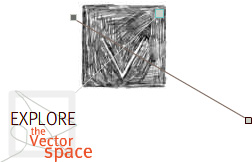ThoughtMesh
Tag your writing. Join the conversation.
Editor's Introduction
The cluster of technologies, protocols and social conventions that has come to be known as Web 2.0 promises to make the contents of the internet more dynamic, reconfigurable and accessible than ever. We, as users, should become smarter as a result, but more importantly, the system itself should grow more intelligent as it is used, annotated, tagged and (re)organized by a motivated and informed user base. But significant obstacles to achieving the dream of a genuinely intelligent, self-organizing, or semantic network remain. Some applications yield content that the network cannot see as anything other than a black box with unknown contents; others may be visible but with a degree of granularity that is either too large or too small -- having Google read every word of every article and book every time you enter a search term just might not yield the most useful results. Enter Thoughtmesh.
This project, created as a collaboration between Jon Ippolito and Craig Dietrich, aims to facilitate the intelligent parsing and tagging of the content of academic articles hosted either externally on the net at large or internally on the Thoughtmesh server. The system then generates connections via tag clouds of the contents of all articles tagged using Thoughtmesh protocols. Like all metadata schemes, Thoughtmesh is only as useful as its community of users makes it and its power grows exponentially as more users begin to see its value and feed their own content into the system. Each issue of Vectors features at least one such "tool to think with," which invites contributions and functionality beyond the bounds of a one-time publication. Part of the promise of Thoughtmesh is its appeal to clearly defined constituencies within the academic community. And while certain sectors of academia -- particularly in the humanities -- continue to struggle to see the value of online publication, Thoughtmesh offers to amplify the value of electronic publication by making it not only more timely, cost-effective and widely distributed, but also more intelligent, dynamic and contributing to a more vibrant cultural discourse.



